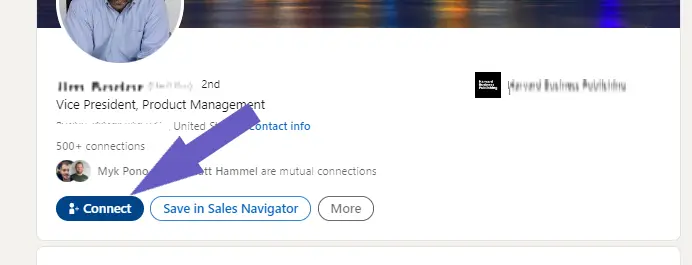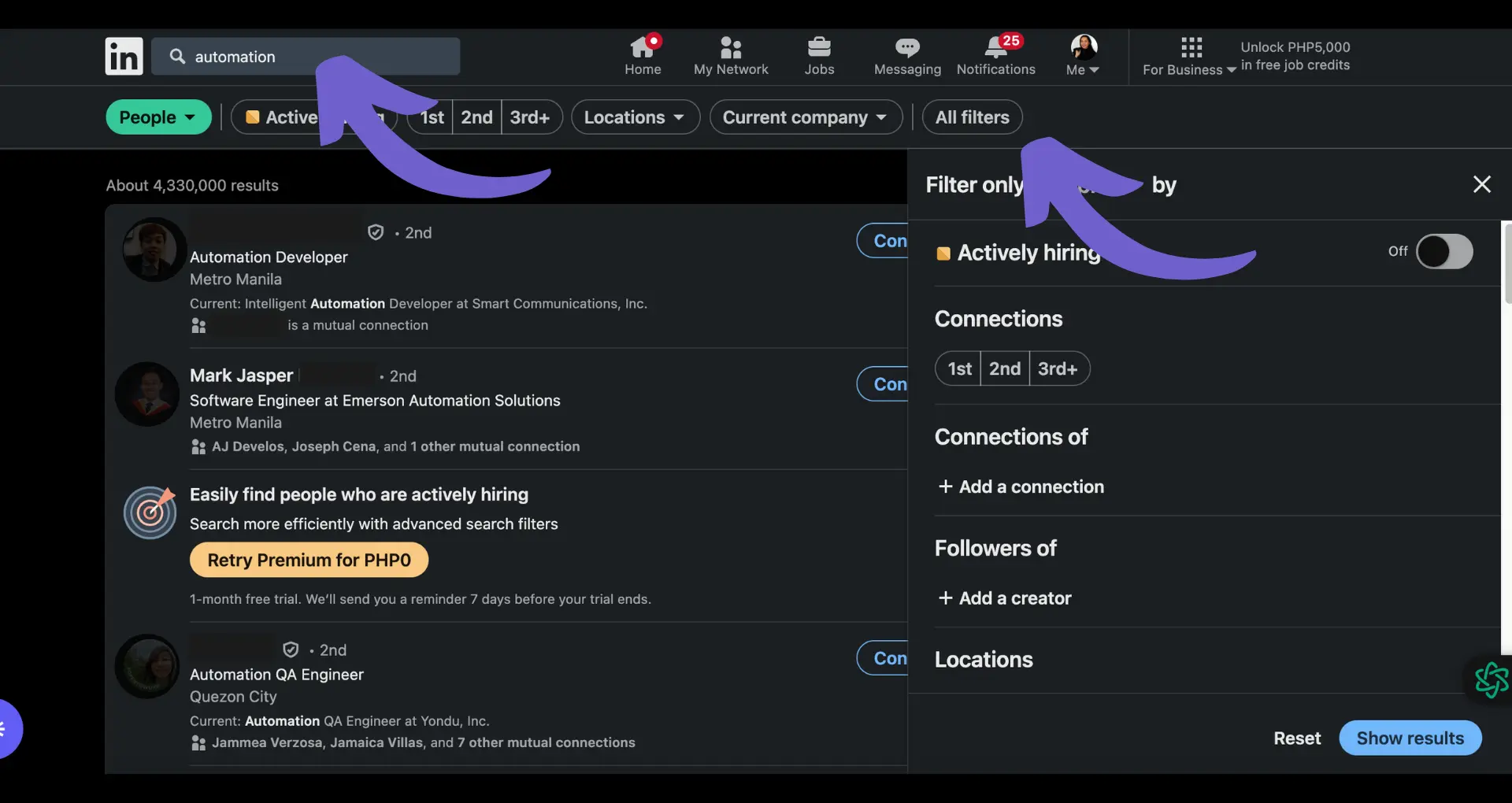





Salesforce helps you capture, nurture, and convert leads efficiently.
By the way, we're Bardeen, we build a free AI Agent for doing repetitive tasks.
If you use Salesforce, you might love Bardeen's AI tools for sales. Automate lead management and focus on high-value tasks.
Salesforce, a leading CRM platform, offers robust lead management capabilities to help businesses efficiently capture, nurture, and convert leads. In this comprehensive guide, we'll explain the key components of Salesforce's lead management framework and provide strategies, tips, and best practices to optimize your lead management processes. By leveraging Salesforce's powerful features and implementing these proven techniques, you can enhance lead quality, streamline sales efforts, and ultimately boost conversion rates.
Salesforce's lead management framework is designed to streamline the process of capturing, scoring, and nurturing leads. The basic components include:
By integrating these components into a cohesive system, Salesforce enhances lead tracking and increases conversion rates. The platform offers a centralized database for storing lead information, making it easy for marketing and sales teams to access and update data in real-time. This integration also enables seamless lead handoff between teams, ensuring that no leads slip through the cracks.
Salesforce provides several effective methods for capturing leads, ensuring that you have a steady stream of potential customers entering your sales funnel. Two key techniques for lead capture in Salesforce are:
Ready to save time on repetitive tasks? Build a strong prospect list with Bardeen and automate lead capture, so you can focus on more important work.
Data quality is crucial for effective lead management, and Salesforce offers features to help maintain clean data capture. For example, you can set up validation rules to ensure that required fields are completed and that data is entered in a consistent format. Additionally, Salesforce's duplicate management tools help identify and merge duplicate lead records, keeping your database organized and accurate.
By optimizing your lead capture techniques and prioritizing data quality, you can ensure that your sales team has access to a robust and reliable pool of potential customers, setting the stage for effective lead nurturing and conversion. Learn how to build a strong prospect list to enhance your lead capturing strategies.
Salesforce offers robust capabilities for lead scoring based on predefined criteria, allowing you to evaluate lead quality and sales-readiness. By assigning points to various attributes and actions, such as job title, company size, website visits, and form submissions, you can create a comprehensive scoring model that reflects each lead's potential value.
Salesforce's Einstein Lead Scoring uses artificial intelligence to analyze your historical lead conversion data, identifying patterns and predicting which current leads are most likely to convert. This AI-powered approach helps you prioritize leads with AI tools, ensuring your sales team focuses on the most promising opportunities.
Prioritizing leads through strategic scoring offers several benefits:
To maximize the impact of lead scoring in Salesforce, consider these best practices:
By implementing a strategic lead scoring system in Salesforce, you can optimize your sales process, focus on the right opportunities, and ultimately drive more conversions and revenue for your business.
Salesforce offers a range of tools and features to support effective lead nurturing, enabling you to maintain interest and move leads through the sales funnel. With Salesforce's marketing automation capabilities, you can create targeted email campaigns that deliver personalized content to leads based on their interests, behavior, and stage in the buyer's journey.
For example, you can set up an automated email series that triggers when a lead downloads a specific piece of content or visits a particular page on your website. These emails can provide additional resources, invite leads to webinars or events, or offer a free trial or consultation. By delivering relevant, timely content, you keep leads engaged and demonstrate your expertise and value.
Salesforce also allows you to segment your lead database based on criteria such as industry, job title, or lead score, ensuring that your nurturing efforts are tailored to each lead's specific needs and interests. This personalization helps build trust and rapport, making leads more receptive to your messaging and offers.
In addition to email, Salesforce supports lead nurturing through other channels, such as social media and mobile. By integrating your social media accounts with Salesforce, you can monitor leads' activity, engage in conversations, and share valuable content. Mobile push notifications can also be used to deliver timely updates and offers directly to leads' devices.
To maximize the impact of your lead nurturing efforts, consider these best practices:
Boost your lead nurturing efficiency by trying Bardeen. It automates repetitive tasks and helps you focus on important work. Learn how to automate outreach and follow-up with ease.
By leveraging Salesforce's lead nurturing capabilities and implementing these best practices, you can effectively guide leads through the sales funnel, building relationships and increasing the likelihood of conversion.
Salesforce provides powerful tools and features to help you optimize lead conversion rates and turn more leads into customers. By leveraging Salesforce's analytics and A/B testing capabilities, you can gain valuable insights into lead behavior and preferences, enabling you to refine your conversion strategies.
One key technique for increasing lead conversion rates is to use Salesforce's reporting and dashboard functionality to track key metrics such as lead source, lead quality, and conversion rates by stage. By identifying the most effective lead sources and understanding where leads are dropping off in the funnel, you can focus your efforts on the highest-value opportunities and address any bottlenecks in the conversion process.
Salesforce also allows you to create targeted lead lists based on specific criteria, such as industry, job title, or behavior. By segmenting your leads and delivering personalized interactions and offers, you can increase the relevance and value of your outreach, improving the likelihood of conversion.
A/B testing is another powerful tool for optimizing lead conversion in Salesforce. By creating variations of your landing pages, forms, or email templates and testing them with different lead segments, you can determine which elements resonate best with your audience and drive the highest conversion rates. Sales demo best practices can also help you refine your approach. Salesforce's built-in A/B testing functionality makes it easy to set up and manage these experiments, providing clear insights into the most effective approaches.
To further improve your conversion rates, consider these best practices:
By leveraging Salesforce's analytics, segmentation, and A/B testing capabilities, and implementing these best practices, you can significantly improve your lead conversion rates and drive more revenue for your business.
Salesforce offers seamless integration with a wide range of marketing tools and platforms, enabling you to create a unified view of the customer journey. By connecting Salesforce with your marketing stack, you can bridge the gap between marketing and sales efforts, fostering better collaboration and driving increased ROI.
One powerful example of this integration is Marketing Cloud Connect, which allows you to sync data between Salesforce CRM and Marketing Cloud Engagement. With Marketing Cloud Connect, you can:
By integrating Salesforce with marketing automation tools, social media management platforms, and analytics solutions, you can create a cohesive ecosystem that supports your entire marketing and sales funnel. This integration allows you to:
To maximize the benefits of Salesforce integration, consider these best practices:
By integrating Salesforce with your marketing and sales strategies, you can create a powerful, data-driven ecosystem that supports personalized, omni-channel customer experiences and drives long-term business growth. For more on how to automate sales prospecting, check out our guide.
Save time on routine tasks with Bardeen. Discover how to automate sales prospecting and focus on what really matters.










SOC 2 Type II, GDPR and CASA Tier 2 and 3 certified — so you can automate with confidence at any scale.
Bardeen is an automation and workflow platform designed to help GTM teams eliminate manual tasks and streamline processes. It connects and integrates with your favorite tools, enabling you to automate repetitive workflows, manage data across systems, and enhance collaboration.
Bardeen acts as a bridge to enhance and automate workflows. It can reduce your reliance on tools focused on data entry and CRM updating, lead generation and outreach, reporting and analytics, and communication and follow-ups.
Bardeen is ideal for GTM teams across various roles including Sales (SDRs, AEs), Customer Success (CSMs), Revenue Operations, Sales Engineering, and Sales Leadership.
Bardeen integrates broadly with CRMs, communication platforms, lead generation tools, project and task management tools, and customer success tools. These integrations connect workflows and ensure data flows smoothly across systems.
Bardeen supports a wide variety of use cases across different teams, such as:
Sales: Automating lead discovery, enrichment and outreach sequences. Tracking account activity and nurturing target accounts.
Customer Success: Preparing for customer meetings, analyzing engagement metrics, and managing renewals.
Revenue Operations: Monitoring lead status, ensuring data accuracy, and generating detailed activity summaries.
Sales Leadership: Creating competitive analysis reports, monitoring pipeline health, and generating daily/weekly team performance summaries.